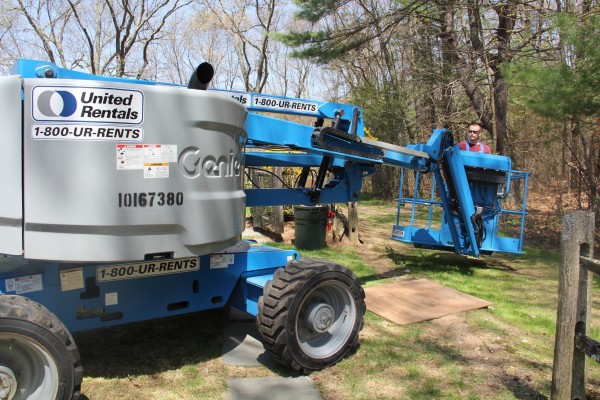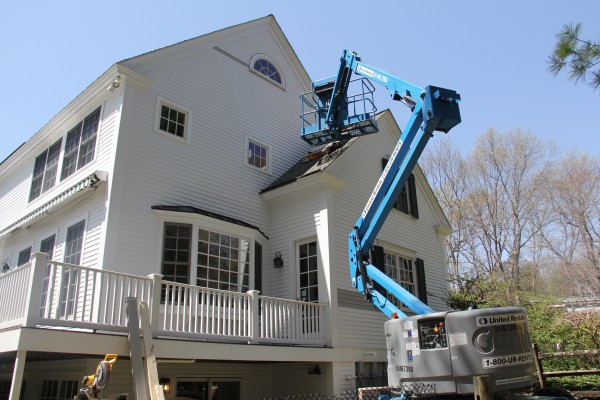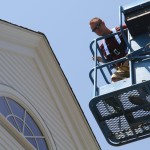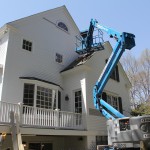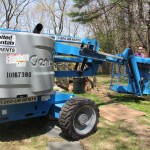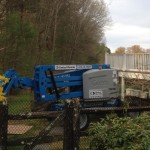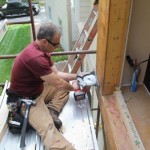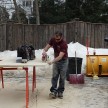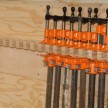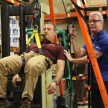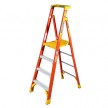Working From Heights
Aerial Lift:
Proper operation and use of aerial lifts and scaffolding can make completion of tasks at elevation safer and more efficient. However, unsafe use, operation, and lift work practices can result in serious injury.
Aerial lifts are one of the most common devices used to conduct work from elevated locations and are commonly seen on commercial job sites. Aerial lifts are defined as, “any vehicle-mounted device, telescoping or articulating, or both, which is used to position personnel.” [29 CFR 1910.67(a)(1)]
The major causes of fatalities from aerial lifts are falls, electrocutions, and collapses or tip-overs. It is imperative that you take a safety course and learn the proper setup and operation of any lift you work with. See OSHA Aerial Lift Safe Work Practices.
Some commonly used brands are;
- Genie High Lift
- Condor Lift
- Snorkel Lift
Types of Aerial Lifts:
There are multiple types of aerial lift equipment, they are;
- Bucket Truck – or cherry pickers are types of aerial lifts that contain a bucket-like platform attached to a boom and mounted on top of a truck or van
- Scissor Lifts – use crisscross braces that extend and stretch upward.
- Articulated Boom Lift – extend up and over machinery and other obstacles and are able to reach elevated positions not easily approached by a straight boom lift.
- Telescoping Boom Lift – are used for applications that require high reach capability.
- Man Lift – consist of platforms or brackets and accompanying handholds mounted on, or attached to an endless belt, operating vertically in one direction only and being supported by, and driven through pulleys, at the top and bottom. These man lifts are intended for the conveyance of persons only. This section applies to man lifts used to carry only personnel trained and authorized by the employer in their use.
Fall Arrest Systems:
Personal fall arrest systems provide each worker with individual fall protection and should be worn when working from heights.
Workers wear a body harness connected by a lifeline to a fixed anchor. The anchor must be able to withstand 5,000 pounds of force, and the lifeline must be made of webbing or have a wire core if it might come in contact with a sharp edge.
Personal fall arrest systems are designed to go into action when a worker has fallen 6 feet and before contact with any lower level. Workers must be trained to use personal fall arrest systems properly and to inspect them before each use. Read how to select the best fall arrest harness.
Conclusion:
The plethora of aerial lifts available today meaning there is a lift solution for almost every worksite application. Scissor lifts, articulating booms and telescopic booms are self-propelled machines that provide fast and efficient solutions to meet the needs of each Jobsite. On residential applications, we typically require more reach and need the range of articulating and telescopic boom.




